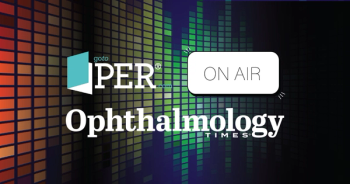
- Ophthalmology Times: July 15, 2020
- Volume 45
- Issue 12
Machine-learning algorithms could help predict course of NPDR
Machine-learning algorithms have potential to predict patients with nonproliferative diabetic retinopathy who will or will not improve over time.
This article was reviewed by Dimitrios Damopoulos, PhD
According to results of a recent study, it may be possible to predict through machine learning which patients will have improvements in their mild nonproliferative diabetic retinopathy (NPDR).
Features based on retinal imaging were more predictive of improvements compared to features based on patient demographics and systemic measurements. The ability to predict improvements in NPDR may facilitate more personalized monitoring of patients.
Related:
The Early Treatment Diabetic Retinopathy Study-Diabetic Retinopathy Severity Score (ETDRS-DRSS) has been an invaluable tool for clinicians treating patients with diabetic retinopathy (DR).
The severity score guides clinicians regarding expectations of disease worsening based on each level of progression.
“A single step on the scale represents a clinically meaningful change. Progression in the ETDRS-DRSS is associated with development of vision-threatening DR,” according to Dimitrios Damopoulos, PhD, lead author of the study.
Even the early stages of DR are associated with life-changing effects, as patients’ quality of life can be affected even before there is a clinically measurable loss of central vision.1,2
Therefore, studying the changes in DR severity early on may identify patients who have a higher risk of progression to visual loss from the disease, he explained.
Related:
Algorithm development
Because time is of the essence in DR, Damopoulos and colleagues set a 3-pronged goal: to develop an initial machine learning algorithm to help predict improvements in DR in patients with mild NPDR, to test the algorithm’s capability to identify rapidly advancing disease during its early stages, and to evaluate the changes in severity over 2 years in patients with mild NPDR in the C-Tracer (95 patients at baseline, 93 at 2 years) and EUROCONDOR (NCT01726075;
340 patients at baseline, 338 at 2 years) studies who had not been treated with intravitreal therapies.
According to Damopoulos, investigators first analyzed the statistics of improvement and worsening of the DRSS from baseline to 2 years.
Related:
He reported that at 2 years there was only a handful of patients who showed a 2-step worsening and less than 7% in each study had a 2-step improvement.
“Considering these characteristics of the study population, we focused on predicting the 1-step level of improvement,” he said.
For this task, after excluding patients who could not improve further, they ended up with 288 patients from both studies. Of these, 123 improved, 148 remained unchanged, and 17 worsened.
Finally, they trained the algorithms and assessed how they performed in predicting improvements based on specific families of baseline features, such as the demographics and systemic measurements, features based on retinal imaging, and the combination of those 2.
Related:
Analysis
The patient demographics and systemic measurements included age (mean, 62.7 years), gender (65.6% male), diabetes duration (12.2 years), hemoglobin A1C (7.22), and cholesterol profile.
The retinal and functional features included the central subfield thickness, number of microaneurysms, DRSS level, and best-corrected visual acuity.
Damopoulos explained that features from both studies were used to train random forest machine learning models to predict whether individual subjects were improvers or nonimprovers after 2 years.
The results showed that using features of retinal imaging alone, or in combination with demographic and systemic features, the respective average areas under the curve were 73% and 74%. The results with the demographic and functional features alone was 57%, he reported.
Related:
Conclusions reached were that combining all the features provided the higher predictive outcome for DR improvement in patients with mild NPDR, and the features of retinalimages had a higher predictive value than the demographic and systemic features.
Importantly, using predictive machine learning models in patients with mild NPDR may facilitate personalized monitoring and follow-up, according to Damopoulos.
Moving forward, continued work in this research will attempt to predict 2-step changes and worsening of DR.
The investigators plan to use longer observational periods and employ larger datasets for modeling, possibly by complementing the dataset with similar patient groups from other clinical trials, Damopoulos concluded.
----
Dimitrios Damopoulos, PhD
e:
Dr. Damopoulos is an employee of F. Hoffmann-La Roche, Basel, Switzerland. Genentech Inc, a member of the Roche Group, provided funding.
----
References
Mazhar K, Varma R, Choudhury F, et al; Los Angeles Latino Eye Study Group. Severity of diabetic retinopathy and health-related quality of life: the Los Angeles Latino Eye Study. Ophthalmology. 2011;118(4):649-655. doi:10.1016/j.ophtha.2010.08.003
Willis JR, Doan QV, Gleeson M, et al. Vision-related functional burden of diabetic retinopathy across severity levels in the United States. JAMA Ophthalmol. 2017;135(9):926-932. doi:10.1001/jamaophthalmol.2017.2553
Articles in this issue
over 5 years ago
Toric stability: A minor change with a major impact for patientsover 5 years ago
Diagnosing a 'down looker'over 5 years ago
Dropless, hands-free regimen key for patientsover 5 years ago
Gene therapy offers hope for choroideremiaover 5 years ago
Thyroid eye disease: Not limited to visual impairmentover 5 years ago
Beating burnout with camaraderieNewsletter
Don’t miss out—get Ophthalmology Times updates on the latest clinical advancements and expert interviews, straight to your inbox.












































